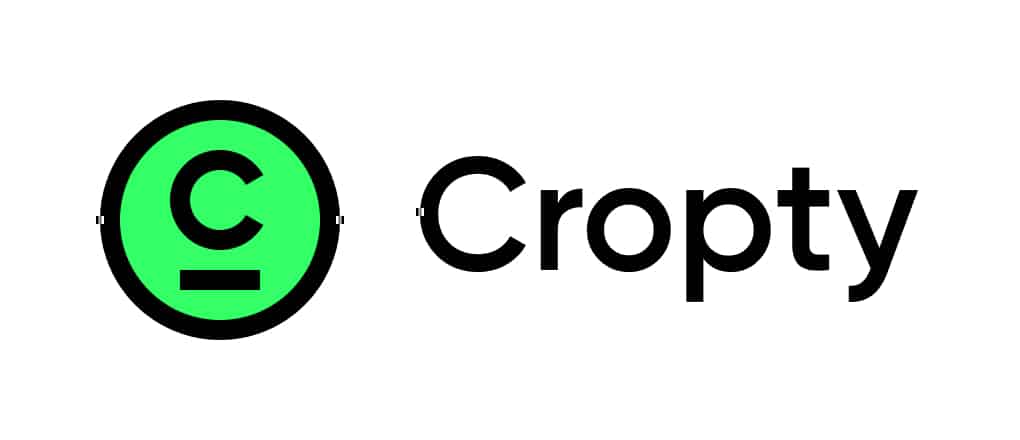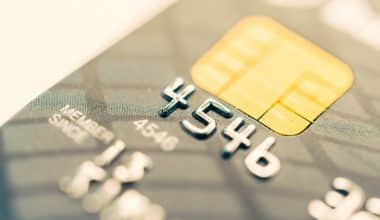What Exactly is a Crypto Wallet?
In a nutshell, a crypto wallet is a tool for interacting with the blockchain network. The various types of crypto wallets are in three categories: software, hardware, and paper wallets. They are sometimes known as hot or cold wallets, depending on their operating mechanics.
For obvious reasons, however, tons of crypto wallet providers often take the software route. This is because of the flexibility that comes with it. For starters, it makes them more comfortable to use than hardware wallets. That’s regardless of the fact that hardware wallets are the most secure option. Paper wallets, on the other hand, are “wallets” printed on a piece of paper; although they are now considered outdated and unreliable.
How do they work?
Crypto wallets, contrary to widespread assumption, do not really store cryptocurrencies. Rather, they give the necessary tools for interacting with a blockchain. To put it another way, crypto wallets generate the data required to send and receive cryptocurrencies through blockchain transactions. One or more pairs of public and private keys among other items are vital aspects of those pieces of information. If these whole terms sound sophisticated, you can use ECN Brokers. We have also made a Vantage fx review, it would be of help too
Read Also: Trust Wallet: Overview, Tokens, How to Use Trust Wallet
For the most part, the wallet also contains an address, which is an alphanumeric identifier created using public and private keys. In reality, a single “location” on the blockchain to which money can be transferred is referred to as an address. This means you can share your address with others to receive payments, but not your private keys.
Furthermore, regardless of the wallet you use, the private key provides you access to your crypto. As a result, even if your computer or smartphone is hacked, you may still access your funds on another device if you have the private key (or seed phrase). In addition, it’s important to note that the coins never completely disappear from the blockchain; instead, they’re simply transferred from one address to another.
Hot vs. Cold wallets
As previously stated, bitcoin wallets can be classified as “hot” or “cold” depending on how they operate.
Every wallet that is connected to the Internet in some way is considered a hot wallet. When you sign up for a Binance or Trust Wallet account and send money to your wallets, you’re putting it into Binance or Trust Wallet’s hot wallet. These wallets are simple to set up and use, with funds available immediately, making them ideal for traders and other regular users.
Cold wallets, on the other hand, do not need an Internet connection. Instead, they keep the keys offline on a physical medium, making them immune to online hacks. As a result, cold wallets are a considerably safer way of “keeping” your funds. Long-term investors, commonly known as “HODLers,” often benefit from this approach, which is also known as cold storage.
Most crypto wallet providers only keep a limited number of coins in their hot wallets to protect users’ cash. The rest go into cold storage.
Software Wallets
There are many distinct types of software wallets, each with its own set of attributes. The majority of them need connection to the Internet in some way (hot wallets). The following are descriptions of the three most frequent and significant types of wallets: web, desktop, and mobile.
Read Also: What is Bitcoin? History, How it Works & All You Need
#1. Web Wallets
Web wallets allow you to access blockchains directly from your browser without having to download or install anything. Both exchange wallets and other browser-based wallet providers fall within this category
For the most part, you can create a new wallet and protect it with a personal password. Some service providers, on the other hand, hold and manage your private keys on your behalf. This may be more convenient for inexperienced users, but it is a risky practice.
In clear terms, you’re entrusting your coins to someone else if you don’t keep your private keys. To remedy this issue, many web wallets now give you the option of managing your keys totally or through shared control (via multi-signatures). As a result, it’s critical to examine each wallet’s technical approach before deciding which is best for you.
When using crypto exchanges, you should think about employing multiple security features. Device management, multi-factor authentication, anti-phishing code, and withdrawal address control are just a few of the security features available on most exchanges.
#2. Desktop Wallets
A desktop wallet, as the name implies, is software that you download and run locally on your computer. Desktop wallets, unlike other alternatives, provide you complete control over your keys and funds. A file called “wallet.dat” will be saved locally on your computer when you create a new desktop wallet. You should, however, encrypt this file using a personal password because it contains the private key information necessary to access your wallet addresses.
Encrypting your desktop wallet means you’ll have to enter your password each time you launch the app to allow it to read the wallet.dat file. You will most likely lose access to your funds if you lose this file or forget your password.
As a result, it’s critical to back up your wallet.dat file and store it safely. You can also export the private key or seed phrase that corresponds. You’ll be able to access your funds on other devices if your computer breaks down or becomes unreachable for some reason.
In general, desktop wallets are a safer option than web wallets. However, before setting up and using a cryptocurrency wallet, ensure your computer is free of viruses and spyware.
#3. Mobile Wallets
Mobile wallets are similar to desktop wallets, except they are designed exclusively for smartphones. This is quite useful since they allow you to transfer and receive bitcoins via QR codes.
As a result, mobile wallets are particularly well-suited for everyday transactions and payments, making them a feasible choice for spending Bitcoin, BNB, and other cryptocurrencies in the real world. A popular example of a mobile crypto wallet is Trust Wallet.
However, mobile devices, like desktops, are subject to rogue programs and malware infiltration. As a result, it’s a good idea to password-protect your mobile wallet and back up your private keys (or seed phrase) in case your phone goes missing.
Hardware Wallets
Hardware wallets are physical, electronic devices that produce public and private keys using a random number generator (RNG). You then save these keys locally on the device without any form of Internet connection. As a result, hardware storage is classified as a sort of cold wallet. It also ranks as one of the most secure options.
While crypto wallets provide greater protection against internet attacks, they may pose risks if you do not install the firmware properly. In addition, comparing them to hot wallets, hardware wallets are less user-friendly and funds are more difficult to access.
Note: If you plan to keep your Bitcoin for a long time or if you have a considerable amount of it, you should consider using a hardware wallet. Most hardware wallets currently allow you to set up a PIN code to protect your device as well as a recovery phrase in case your wallet is lost.
Paper Wallets
A paper wallet is a piece of paper on which a crypto address and its private key are printed as QR codes. In the future, you can scan these codes to carry out any crypto transactions.
Meanwhile, some paper wallet websites allow you download their code to generate new addresses and keys offline. As a result, these wallets are extremely resistant to online hacking attacks and could be a better alternative to cold storage.
However, because of the numerous flaws, paper wallets are now considered dangerous and should be avoided. If you still want to use it, you must be aware of the dangers.
Drawbacks with Paper Wallets
Paper wallets have a major flaw in that they aren’t designed to send funds in small increments; instead, they must send the entire balance at once.
Consider the following scenario: you created a paper wallet and sent multiple transactions totaling 10 BTC to fund it. If you want to spend 2 BTC, you should first transfer all 10 coins to a different sort of wallet (for example, a desktop wallet), and then spend only a portion of the funds (2 BTC). You can put the 8 BTC in a new paper wallet later, but a hardware or software wallet is a better option.
Basically, if you import your paper wallet private key into a desktop wallet and spend only a portion of the funds, the remaining coins will be sent to a “change address” which the bitcoin protocol will generate automatically. You will most likely lose your funds if you do not manually set the change address to one that you control.
Most software wallets now will take care of the change for you, delivering the remaining bitcoin to a wallet address. The crucial thing to understand is that, regardless of the amount, your paper wallet will be empty after sending out its first transaction. As a result, don’t expect to see it again.
How Does a Crypto Wallet Work?
Cryptocurrency is not stored “in” a wallet per se. The coins reside on a blockchain, and the wallet software allows you to interact with the blockchain’s balances. The wallet holds addresses and lets their owners to transfer coins to other addresses while also allowing others to see the balance held at any given address.
What Is an Example of a Crypto Wallet?
Examples of cryptocurrency wallets
Some examples of hardware wallets are: Ledger. Ledger has a number of hardware wallet options, such as the Nano S and the Nano X. Trezor.
Another example is Cropty. Cropty is a custodial cryptocurrency wallet that securely stores funds, provides users with complete anonymity, and protects transactions with two-factor authentication. The wallet is cross-platform and can be used on both computers and mobile devices. Among other things, Cropty has protection against exchange hacks and does not freeze funds during transactions.
Can You Withdraw Money From Crypto Wallet?
Yes, if you don’t take the right steps to protect your cryptocurrency, it can be stolen. Hackers can either take them from you directly or use tricks to get you to give them to them. If you don’t keep your private keys safe, a hacker could get into your hot wallet.
Is Binance a Crypto Wallet?
The Binance Chain Extension Wallet is a tool that allows you interact with the BC, BSC, and Ethereum blockchain networks. If you lose access to your cryptocurrency wallets, it could cost you a lot of money. So, you should back up your seed phrase often.
Cropty Wallet

“Cropty is a custodial crypto wallet that securely stores funds, provides users with complete anonymity, and protects transactions with two-factor authentication. The wallet is cross-platform and can be used on both computers and mobile devices. Among other things, Cropty has protection against exchange hacks and does not by freezing funds during transactions.
- Trust Wallet Review 2023: Is Trust Wallet Safe? (Updated!!!)
- Types of CryptoCurrency: Understanding the Different Types of Crypto
- Best Crypto Staking Rewards, Platforms, & Calculators (+ Tax Practices)
- AfriPay – Africa’s Surging Cryptocurrency
- Trust Wallet Review 2023: Is Trust Wallet Safe? (Updated!!!)
- SEED PHRASE RECOVERY: What Is It and Why It’s Important






